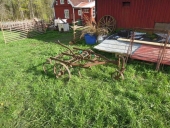




"Disturbance is critical" Joel Salatin

 1
1




Hans Albert Quistorff, LMT projects on permies Hans Massage Qberry Farm magnet therapy gmail hquistorff
 1
1




"Disturbance is critical" Joel Salatin
 1
1








Kc Simmons wrote:I think the ones you mentioned sound great (though I've never grown hemp before).
I've had good results in a similar situation using a mix of different annuals that have varying heights & root depths. This seems to help bring a balance to the layers of soil; instead of just improving one layer. Plus the variation in growth habits takes up different spaces where more opportunistic & undesirable weeds may try to squeeze in.
I frequently buy the forage mixes that are designed for deer hunting when they get marked on clearance. I've also gotten the boxes of mixed flower seeds that are sold as "butterfly garden," or something like that. Then I mix it all in a bucket, along with any leftover flower/herb/veggie/ect. seeds from the previous year, and go out an broadcast it.
The different growth speeds, germination rates, and plant types gives me the option of going in & cutting the larger stuff down, as needed; or waiting until it's all mature and chopping it all down at once.
I would think something like that would be manageable for ⅓ acre, but if you'd prefer to just stick with one or two types, then the annual clovers, sunflowers, hemp may be best.
"Disturbance is critical" Joel Salatin




Sometimes the answer is nothing

 1
1









|
Every snowflake is perfect and unique. And every snowflake contains a very tiny ad.
Learn Permaculture through a little hard work
https://wheaton-labs.com/bootcamp
|


